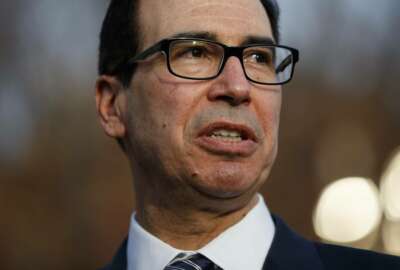
‘Tough decisions’ lie ahead for USPS in upcoming 10-year business plan
Following pressure from lawmakers at a House Oversight and Reform Committee hearing last month, the Postal Service has shed more light on a strategic plan aimed...
Following pressure from lawmakers at a House Oversight and Reform Committee hearing last month, the Postal Service has shed more light on a strategic plan aimed to outline a long-term business model for USPS.
Postmaster General Megan Brennan, in a call with reporters Friday, said the 10-year plan would address some of the same sustainability questions that have also been raised by a White House postal task force, which released its final recommendations last December.
“The plan will essentially focus on the key public policy questions of what universal services the postal service should provide and how to pay for those services,” Brennan said.
However, several of the core issues the plan seeks to address will require action from Congress.
“We have no illusions — tough decisions will be necessary,” Brennan said. “We additionally anticipate that a significant effort will be necessary to build consensus and support among our various postal stakeholders.”
The Postal Service on Friday reported a $2.1 billion net loss for the second quarter of fiscal 2019. For fiscal 2018, it reported a net loss of $3.9 billion.
David Williams, one of two confirmed members on the USPS Board of Governors, said the board’s strategic planning committee met three times between March and April to discuss some of the major pillars in the strategic plan.
Those facets, Williams said, include legislative proposals for market-dominant pricing — which includes products like first-class mail — and simpler pricing that “would enable greater ease on the part of customers to work with the Postal Service.”
The board, he added, has also looked at a “proposed methodology” for calculating the value of the Postal Service’s universal service obligation. The White House postal task force has recommended better defining the USO, which generally tasks USPS with providing a certain level of postal services at least six days a week.
Beyond that, however, the task force has found the USO is based on the “interpretations of various laws, regulations, operating procedures and customs developed over time.”
“Ultimately, the question is, what’s the role for your government-sponsored Postal Service in a 21st-century marketplace, and how are you going to fund it? So that’s a broad public policy discussion that we will continue to have with our public officials as well as other postal stakeholders,” Brennan said.
During the April 30 committee hearing, Rep. Mark Meadows (R-N.C.) expressed frustration with the Postal Service for not yet providing the 10-year business plan, despite its dire financial outlook. Brennan told Meadows USPS would deliver a plan to the committee in about 45 days.
But once USPS hands over its business roadmap, Brennan explained to reporters that it’ll be up to Congress and the Postal Regulatory Commission to implement some of the proposed changes.
“Our ability to generate revenue is constrained by law, and our ability to manage cost is equally constrained,” Brennan said, citing pricing reform as USPS’s key regulatory need.
The Postal Regulatory Commission began its review of the USPS pricing system more than three years ago. Despite raising the price of a first-class stamp to 55 cents in January, the largest increase in its history, the Postal Service has urged the PRC to remove a price cap that limits product increases to the Consumer Price Index.
Fredric Rolando, the president of the National Association of Letter Carriers, said the CPI measures consumer goods and services that don’t fit a transportation and delivery provider like USPS.
“The PRC has the ability to correct this mismatch and relieve the resulting financial pressure,” Rolando said in a statement.
USPS has also called on Congress to eliminate a requirement since 2006 to pre-fund health benefits for future postal retirees. The White House postal task force estimated that USPS has defaulted on $43 billion in prefunding payments to the Postal Service Retiree Health Benefits Fund.
However, Brennan warned lawmakers at last month’s committee hearing that USPS would run out of money by 2024 if it made all of its legally mandated payments.
“Forcing the postal service to default on mandated payments in order to deliver the mail is an untenable public policy. We simply cannot overcome systemic financial imbalances caused by business model constraints,” Brennan said.
Copyright © 2024 Federal News Network. All rights reserved. This website is not intended for users located within the European Economic Area.
Jory Heckman is a reporter at Federal News Network covering U.S. Postal Service, IRS, big data and technology issues.
Follow @jheckmanWFED
Related Stories





